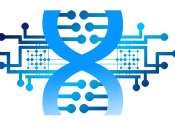More reference expression data
The Huntingtin gene, also called HTT or HD (Huntington disease) gene, or the IT15 ("interesting transcript 15") gene codes for a 348 kDa protein called the huntingtin protein.
It is variable in its structure as there are many polymorphisms of the gene which can lead to variable numbers of glutamine residues present in the protein. In its wild-type (normal) form, it contains 6-35 glutamine residues, however, in individuals affected by Huntington's Disease (an autosomal dominant genetic disorder), it contains greater than 36 glutamine residues (highest reported repeat length is about 250). It's commonly used name is derived from this disease, previously the IT15 label was commonly used. Huntingtin has a predicted mass about 350 kDa, however, this varies and is largely dependent on the number of glutamine residues in the protein. Normal huntingtin is generally accepted to be 3144 amino acids in size.
The exact function of this protein is not known, but it plays an important role in nerve cells. Within cells, huntingtin may be involved in signaling, transporting materials, binding proteins and other structures, and protecting against programmed cell death (apoptosis). The huntingtin protein is required for normal development before birth. It is expressed in many tissues in the body, with the highest levels of expression seen in the brain.








